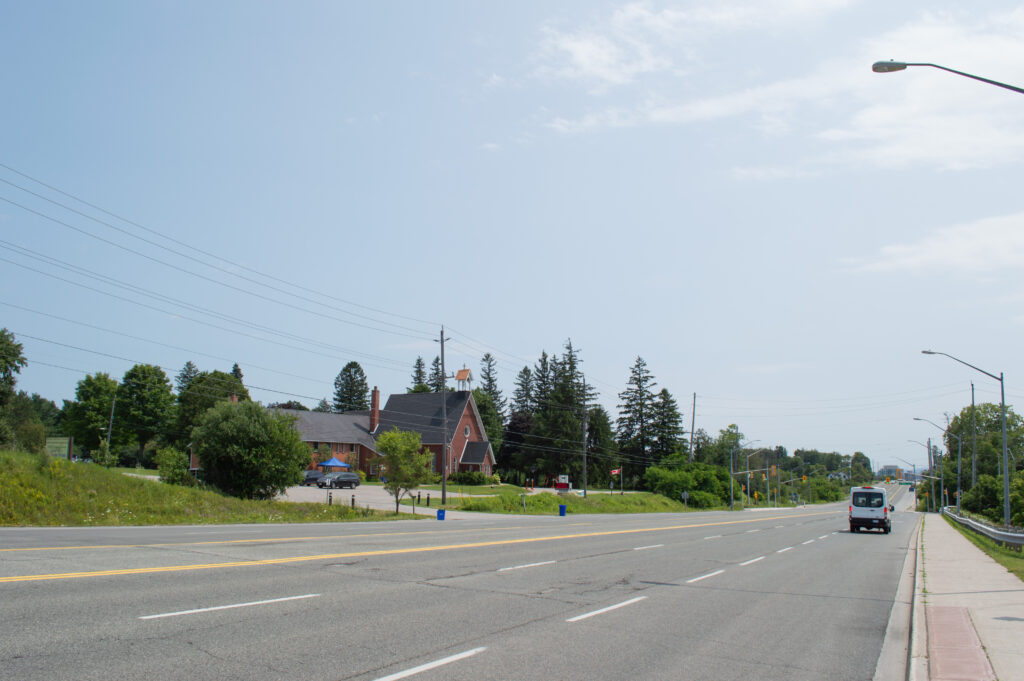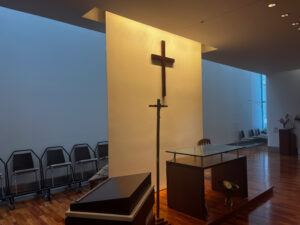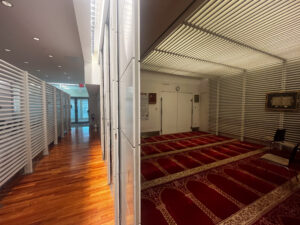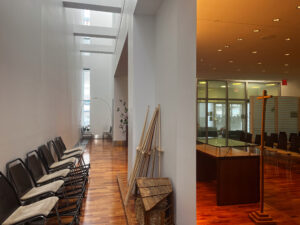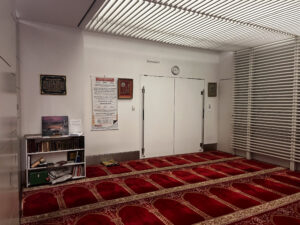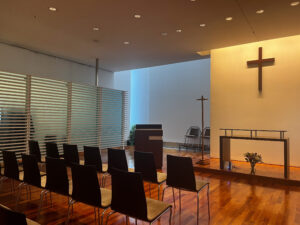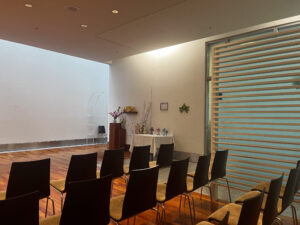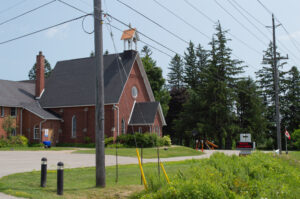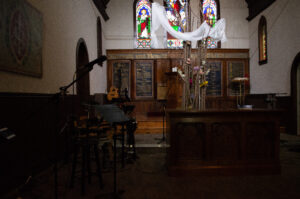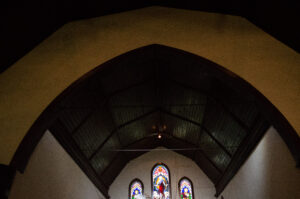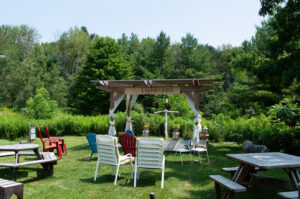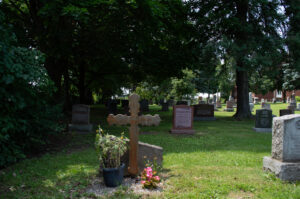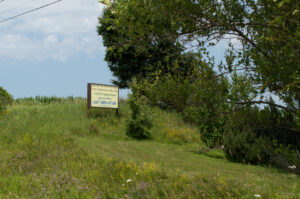Toronto
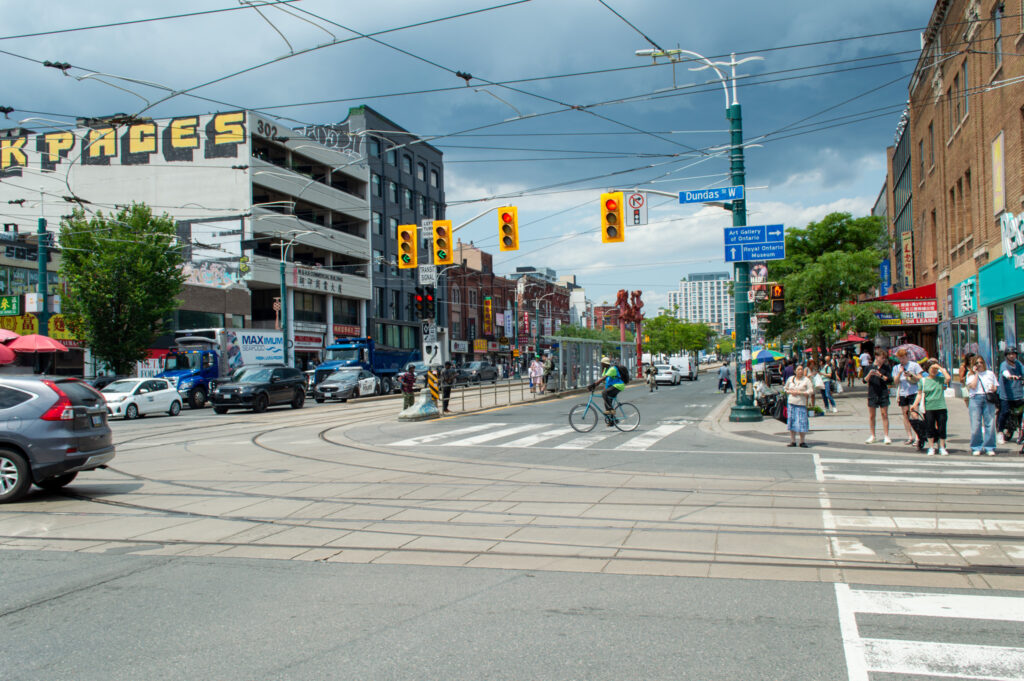
The backpack I carried throughout this trip was very uncomfortable. I’d read reviews saying as much, but had chosen to disregard them. This black Osprey bag was the max carry-on size and granted me ease of mobility, a fair trade for perpetually sore trapezius muscles. When the airport attendant in Copenhagen asked if anybody boarding wanted to check their bag for free, I gladly volunteered. She handed me a sticker that I did not read until I was thousands of miles away in Toronto’s Pearson airport, searching in vain for my bag at 1:00 AM. To my shock and horror, the sticker had the barely legible name of an airport in Washington written on it. I was in Canada with only my passport, camera, phone, and fanny pack. Everything else was on the opposite side of the continent.
My first day in Toronto consisted of me getting familiar with Canada’s version of Walgreens and Marshalls, Shoppers Drug Mart and Winners, respectively. I bought a toothbrush, some deodorant, and a change of clothes. I got a call in the afternoon that my bag had been found and would arrive to Pearson Airport at around 12:00 PM the next day.
The plane bringing my bag was delayed one hour, then another, eventually finally scheduled to arrive around 4:00 PM. Brooding over the time wasted waiting for my belongings and eating a bag of cheetos, I notice a weird symbol on a sign hanging over a door. It depicts a little man kneeling under a roof. The image conveyed its message, so I decide to walk inside. I enter a little waiting-room space where a group of chaplains greeted me. I explain what I’m doing, and they are happy to let me take photos.
The chapel is split into three spaces for worship, one for Christians, one for Muslims, and one for Jewish people. Of course, people outside of the Abrahamic trifecta can come in and pray as well. According to the Mike Garabedian, the chaplain I spoke to, they often do. He explained that although the chapel receives a steady stream of travelers, it mainly serves the thousands of workers at Pearson Airport, notably one of the most diverse in North America. Toronto itself is one of the most international cities in the world, a fact quickly felt by walking more than ten minutes anywhere in the city. This chapel is one of two in the airport. The original one was an average classroom-type space modified for religious activities. There were three separate rooms (Christian, Jewish, Muslim) with three separate doors (1). Terminal 1, this strange little corner next to Tim Horton’s, was built in 2004. Whoever was in charge very obviously took the job seriously, creating a space that and architecture nerd would find impressive. I can honestly say that it was the most interesting and beautiful part of the airport I saw, bring to mind photos I’ve seen of Aires Mateus (though I am guessing with a much tighter budget). The photos don’t really convey it, but this is essentially one large room where faiths blend into each other, delineated by different light conditions.
The initiative to minister within the airport was the mission of one man, a Filipino priest who established the first chapel in the airport back in 1979. Airport employees wanted a prayer space, so a space was set aside for this purpose (although I don’t know where in the airport this was). The Terminal 3 Chapel (2) was later built in 1991 and is about a quarter of the size of Terminal 1 where I sit talking to Mike. He tells me that the church started off affiliated with the Evangelical Fellowship of Canada, but exists today as a non-denominational entity. Mike tells me that he has worked in the airport for eight years, five of those as a senior chaplain ministering to the tens of thousands of employees. At some point I see that the plane with my bag has landed and head out, thanking Mike for his time.
1: There is also a special bathroom for wudu, which I’d never seen in a public building before.
2: I visit this one before heading out and yeah it is about the size of a small classroom, seats facing a podium with a large Catholic bible on it.

The following day I take the Toronto Metro to the far edge of the city. From there I get on a bus. Nobody boarding, myself included, knows that you have to swipe your card at a reader outside (3). The bus driver is not happy. I head North for about fifty minutes, watching the city melt into suburbs. I got off on the side of a road and walk along semi trucks going 65 mph (about 100 kmh for members of the Commonwealth) a short ways until I reach a church. Unlike most of the architecture I’d encountered, this church looks exactly like a church, complete with a steeple. I wander around looking for the pastor, walking towards the sounds of elderly mahjong players until I find him.
Pastor James is the Anglican priest of Light on the Hill, St. John the Baptist. He has a Zoom meeting with the local bishop, so our initial meeting is quick paced. He hands me a printed sheet of historical data he’d made for me, answers a barrage of short questions, then leaves me to log on with the bishop.
Pastor James’s wife Lulu is putting together a slideshow for Sunday’s service while I take photos of the sanctuary. The room is constructed like an upside-down boat. Large pentagonal trusses lay exposed, their dark wood finish absorbing the dim light. The sun trickles in through the stained glass bodies of saints, each glowing in stark contrast to the room. The names of families from the late 19th through early 20th centuries line the bottom of the stained glass pieces.
I explain my project to Lulu and she takes me out to see the church grounds. This is first suburban church I’ve been to on this trip. Here, at the edge of a township, the church takes on a bucolic air. The land behind the church, past the cemetery with gravestones dating to colonial times, is a small meadow. At the edge of the wooded area, chairs are set up pointing towards a small stage. Ontario unsurprisingly has some pretty gnarly winters, so services are often held outside in the summer to make the most of the good weather. To the right of this area is a large community garden with an arched greenhouse. Members of the community rent plots in this garden and tend to them throughout the year.
At some point, Pastor James joins us and tells me more about the church. St. John the Baptist is the meeting space for a number of different congregations, some Anglican, some not. Pastor James breaks down the timetable:
Lighthouse Church (English service; Anglican) – 10:00 AM
Great Doctor Church (Egyptian congregation; basement) – 10:00 AM
Fu-Yin (Mandarin service; Anglican) – 12:00 AM
Glorious Church (Farsi service) – 1:00 PM
Ran Ai (Mandarin service) – 6 PM
Pastor James has been ministering here over the past four years. Originally from China, he studied architecture before deciding to become a priest, getting his clerical education at the University of Toronto. St. John the Baptist Church is north of Toronto proper, in an unincorporated community called Oak Ridges. I’m told that this small township is made up of a largely middle-eastern community in the north and a Chinese one in the south. The Mandarin speaking service, Fu-Yin, is made up largely of elderly Chinese people and has been steadily growing. The church offers after school enrichment programs in subjects like math, so grandparents often bring their grandchildren and stay to hang out with one another.
Before coming to this church, all I knew about the Anglican Church is that priests could marry. Luckily, Pastor James was there to fill me in. I learn about the divide between high and low mass, as well as the current split on LGBTQ issues. This particular church houses the Henri J.M. Nouwen center. His life and story are worth looking up for those who are not familiar. Before I leave, Pastor James gifts me a book on Nouwen. I thank both Lulu and him for letting me wander around, and I head back to the bus stop, tapping the reader outside before hopping on.
3: This actually makes a lot of sense, but only if you know this is how it works–which nobody knew. Also, the honor code of tapping before boarding is enforced by Ontario police who board the bus at a certain point to check the balance on your bus pass. At best you save like ten seconds in boarding people, but it comes at the cost of making the bus riding experience utterly horrible. I have a feeling that car lobbyists are behind this.
